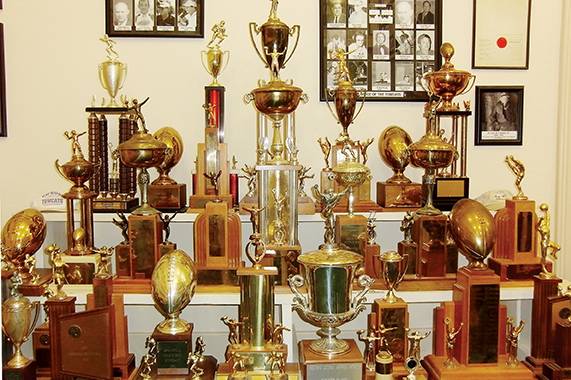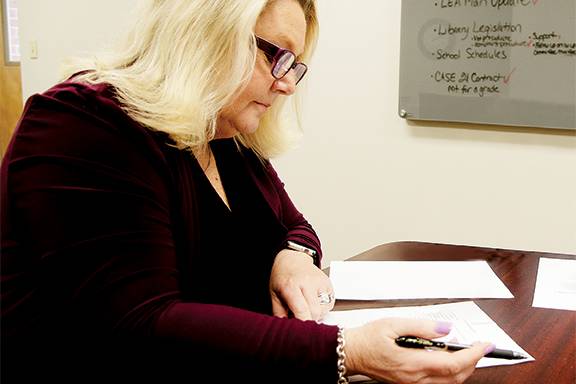The Stained Glass Windows of Temple Adas Israel
“Unique, Beautiful, and filled with the Spirit of God”
Stained glass is an ancient art. It dates to the 7th century BCE in Babylon and Egypt. It adorns churches, cathedrals, mosques and synagogues throughout Europe, the Middle East and Asia … and it adorns the windows of three iconic places of worship in Brownsville.
In November 1898, First Methodist Church caught fire and burned to the ground. Among the crowd gathered to watch the conflagration were several members of the Jewish synagogue, Temple Adas Israel. Within a day, a letter went out from the temple board inviting the church to use its building as a place to worship as it was being rebuilt. As the rebuilding took place, an event occurred that set in motion the arrival of ornate stained glass to Temple Adas Israel.
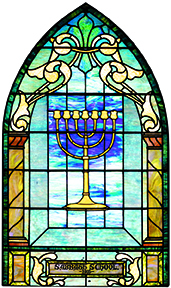
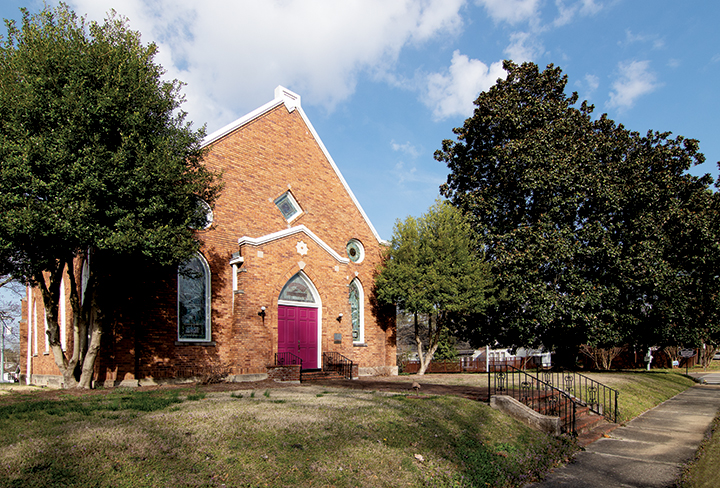
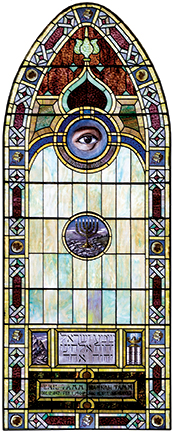
Of course, there were no stained-glass artisans in Brownsville, so how did stained windows come to the temple?
There are at least three different stories of how the stained-glass windows came to be. The one which the holds sway with Adas Israel is an account taken from a taped interview with Morton Felsenthal, as told to him by his parents. It seems that two men of German descent arrived in Brownsville from St. Louis by train. As they walked into town, they recognized German Jewish names on store fronts, which caught their attention since they spoke little English. These names—Felsenthal, Tamm, Anker, Sternberger and Rothschild—resonated with these men. They explained their business—stained-glass window making to local German ears— and that they were looking for First Methodist Church. After they were introduced to members of the church, they were hired to design and install windows in the church. After they completed the church, the temple hired them to install windows in the Jewish house of worship as well. They also installed windows at the Episcopal church, which faces the temple on North Washington Ave. And thus, for over 120 years, three places of worship, inextricably linked to one another, feature some of the most beautiful stained glass windows found in West Tennessee.*
Temple Adas Israel has 17 stained glass windows, highlighted by the large window over the Ark at the west end of the building. It depicts the All-Seeing Eye of God, ever open to God’s people and the world, a God “who neither slumbers nor sleeps.” Also inscribed is the Shema, or the watchword of Judaism, which binds Israel and Jews to God. As sundown approaches, the rays of the setting sun beam through the window, illuminating God’s house and congregants worshipping there. It is dedicated to Hannah and Emil Tamm. Two windows adorn the west end, one in memory of Jacob and Karoline Felsenthal and the other window, given by the Sabbath School of 1915, shows the seven branch candle holder, the menorah.
Each of the remaining windows on the north, south and east sides are dedicated to founding families represented by Sternbergers, Felsenthals, Schafers, Cohns and Rothschilds. Their themes come from the Torah, scenes from early life in Israel, depictions of The Tree of Life, the River of Life, and inscriptions from Jewish beliefs and admonitions in and of God such as “My God is He whom I trust”; “Prepare to Meet Thy God, Oh Israel”; “I will dwell in the House of the Lord forever’”; “Ye shall be to Me a Kingdom of priests and a holy Nation.”




The final window, over the front doorway, is inscribed “Love thy Neighbor as Thyself.” It is, perhaps, fitting that the Jewish congregation of Brownville/Haywood County chose this as the thought which would be with them in their coming and going. The community they called home was, and continues to be, a place where their neighbors were loving and accepting of them…and they of them.
*See accompany article “The Lights of a Colorful Faith Community: Stories of the Shared History in Stained Glass,” by Mary Ann Veirs Lindsay, 1999.

